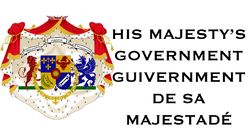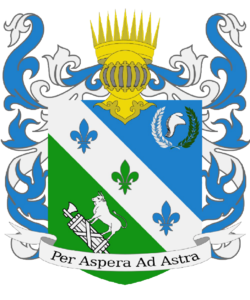Efrasachin Government
 | |
| Formation | 2020 |
|---|---|
| Country | Efransa |
| Monarchy | |
| King | Ethan |
| Executive Branch | |
| Main organ | His Majesty’s Cabinet |
| Leader | The Countess of Machy |
| Appointer | King and National Assembly |
| Meeting place | Executive Corners |
| Departments | First Ministry Ministry of Home Affairs Ministry of Foreign Relations Ministry of Social Affairs |
| Legislative branch | |
| Legislature | Efrasachin Parliament |
| Meeting place | Legislative Table |
| Judicial branch | |
| Supreme Court | High Court of Justice |
| Appeals Court | Supreme Appellate Tribunal |
| Trial Courts | Provincial General Courts/Central Administrative Court |
The Efrasachin Government (Efrasachin: Guivernment Elfrasachin), officially His Majesty’s Government of the Kingdom of Efransa (Efrasachin: Guivernment du Sa Majestadé du Rouiame od Elfransa), is the central government of the Kingdom of Efransa. The has three branches: executive, legislative, and judicial.
The executive branch surrounds the Cabinet, supported by independent agencies. The legislative branch is constituted as the Parliament. While the Judiciary is organized into the High Court of Justice, Circuit Appellate Tribunal, and the Trial Courts, divided into the General Courts and the Central Administrative Court, along with the Special courts.
The Monarchy is independent of the Government, however, it is considered the apex of the governing system.
History
His Majesty’s Government originated as the Grand Congress of the County Palatine of Maradia. Later, it became the Count Palatine’s Honorable Government immediately before its dissolution.
Later, it was refounded as the Floeratia Government, later the Efrasachin General State Administration, and finally the Efrasachin/Iblusigonian Public Federal Civil Administration.
After the September Revolution, it became known as the Central (later Federal) Government of Tribarcas.
Under the Maradian Period, it was known as His Majesty’s Transitional Government. This was de facto in place of His Majesty’s Federal Government.
Under Ludisirga, it was known once again as the Central Government, and the Union Federal Government later on.
Branches
The government has three branches: executive, legislative, and judicial. The Monarchy is a quasi-branch.
Executive
The executive branch is composed of the President of the Government, the Cabinet, and Independent Agencies. The President of the Government is the leader of the whole government and of the executive branch. The President is directly elected and serves as chief advisor to the Monarch. Other functions of the President include supervising the Cabinet and Independent Agencies, mediating the functions of the executive branch, and serving as the “senior” head of government.
Cabinet
The Prime Minister serves as the chief representative of the Government in Parliament, and as the leader of the Cabinet and First Ministry. The Prime Minister serves as the “junior” head of government, but is the only person designated as head of government. The Premier also works with the Cabinet to formulate laws and provide expert opinions on the laws and policies developed by Parliament, the Monarch, and the President of the Government.
The Cabinet Ministries are: the First Ministry; the Ministry of Home Affairs; the Ministry of Foreign Relations; and the Ministry of Social Affairs. Each has multiple subsidiary offices and agencies. The Minister of State also serves as the representative of the First Ministry in the Cabinet. Most often, there are only four Cabinet members, the Prime Minister, the Deputy Prime Minister, a third Minister, and the Minister of State. This is because the Prime Minister and Deputy Prime Minister also lead one of the three Ministries.
Legislative
The Parliament is the legislative branch of His Majesty’s Government. The Parliament is composed of the Senate and the National Assembly. Both houses together are known as the General Congress.
The Senate is constitutionally designated as the foreign policy chamber, while the National Assembly is in practice the domestic policy chamber and constitutionally regulates the Cabinet and Presidential Administration. Both chambers share their powers, however, the National Assembly is traditionally more powerful than the Senate. The General Congress elects the Chamber of Deputies, which serves as the permanent deputation of Parliament.
Judicial
The Judiciary is headed by the Chief Judge. The High Court of Justice was initially the sole court, but with the Fourth Amendment, it is now the Supreme Court. Provincial General Courts and the Central Administrative Court serve as the first instance courts. Special courts include the Fiscal Court, the Supreme Court-Martial, the Surrogates Court, etc.
Government Audit Council
The Government Audit Council is the financial and performance auditing body of the nation. The Chief Judge presides over the Council. The Council is divided into the Financial Audit Committee and the Performance Audit Committee. Both consist of two Auditors.
The Council is elected by the General Congress in a joint sitting, and approved by the King-in-Council. Auditors serve five year terms, or until resignation, death, or removal by the General Congress and approved by the King-in-Council. The Audito Council is considered to be a court of law, while also being part of the legislative branch.
